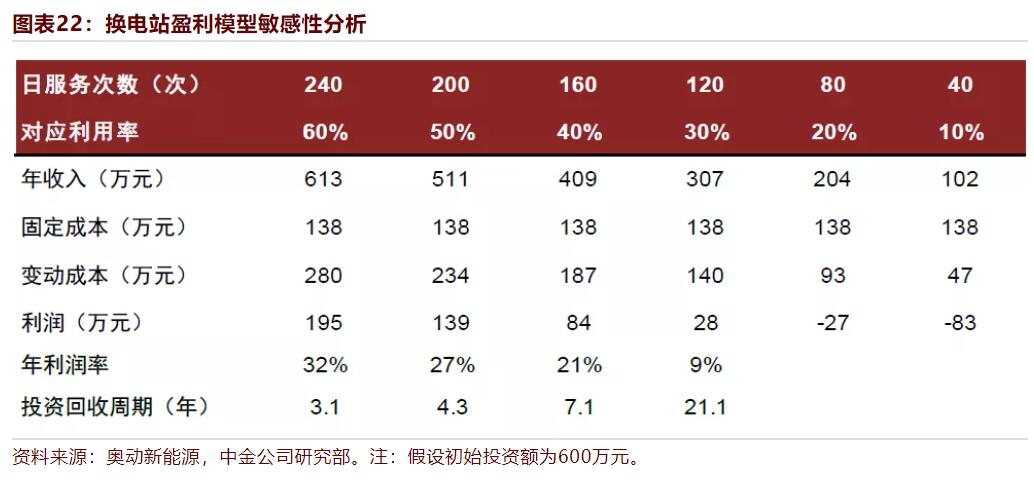CICC says battery swap model has broad growth prospects
According to CICC, a daily service count of 100 may be the break-even point for swap station operators, and a daily service of more than 160 would allow them to make good profits.

The team expects steady-state demand for battery swap stations to be 22,000-26,000 by 2025, corresponding to a market size of about RMB 33-52 billion.
Earlier today, Nio announced that it had reached 700 battery swap stations, ahead of its target for this year.
To date, Nio has provided 5.3 million swaps to users in China, and battery swap has become one of the most popular power solutions for Nio users, the company said.
Nio is accelerating the construction of battery swap stations and is a major contributor to the industry's incremental growth of the facility, CICC said in their report.
According to CICC, the high cost of building battery swap stations and the current lack of uniformity in industry standards make the model more suitable for operating vehicles and high-end vehicles.
Operating vehicles have a high frequency of use and a high demand for continuous and long-distance driving, so there is a strong need for rapid replenishment, according to the team.
Because of the high price of high-end vehicles, battery swap stations bring relatively lower cost increases and are relatively more affordable to vehicle companies.
Nio said at the first Nio Power Day event on July 9 that by the end of 2025, the company will have more than 4,000 battery swap stations worldwide, with 1,000 of them in overseas markets.
From 2022 to 2025, Nio will add 600 battery swap stations per year in the Chinese market, the company said at the time.
In addition to Nio, other major battery swap station operators are targeting the cab market.
In May, Aulton Chairman Cai Dongqing said the company aims to build 10,000 battery swap stations by 2025.


